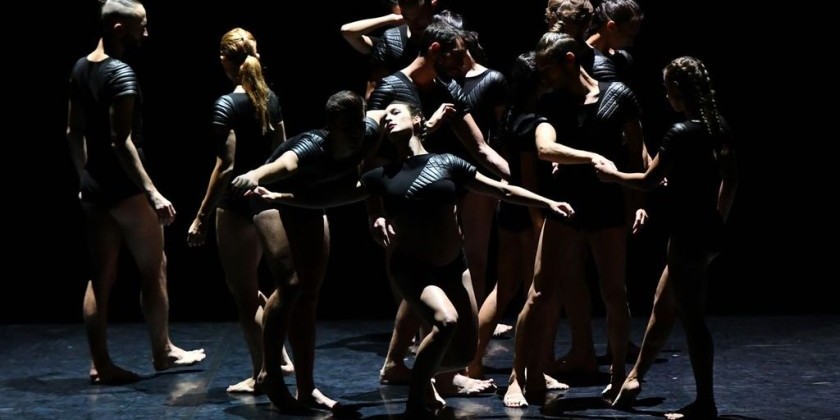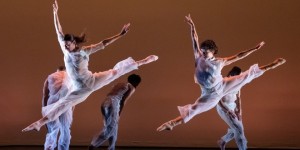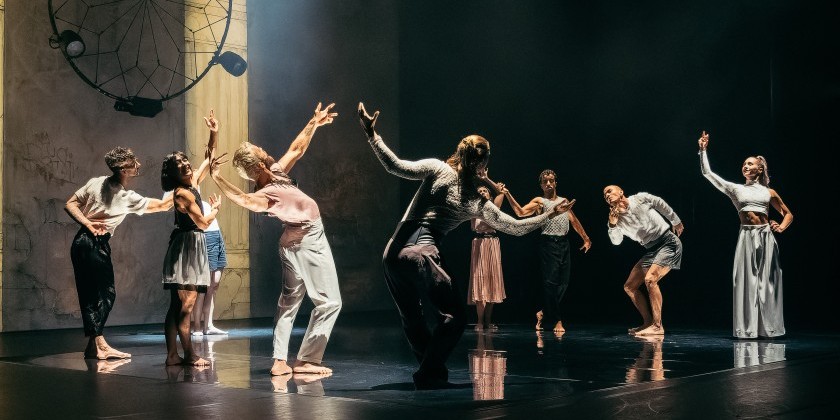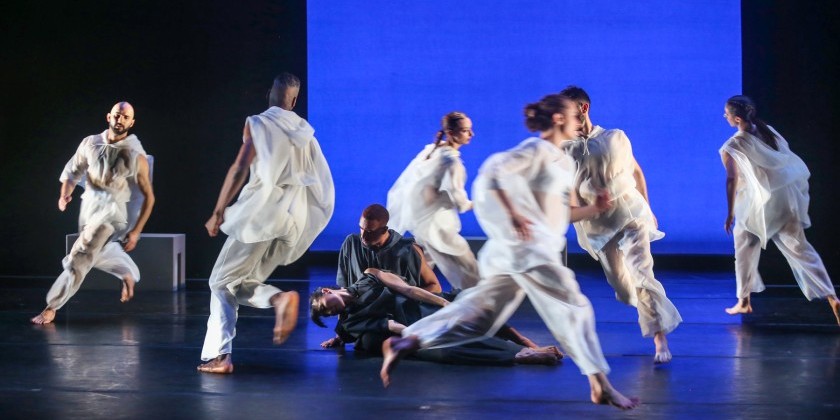IMPRESSIONS: Ballet Preljocaj presents “Gravity” at the Joyce Theater

Choreographer and Artistic Director: Angelin Preljocaj
Rehearsal Assistant: Paolo Franco
Stage Manager: Michel Pellegrino
Costumes: Igor Chapurin
Light Manager: Gaspard Juan
Technical Director: Luc Corazza
Dancers: Angie Armand, Liam Bourbon Simeonov, Clara Freschel, Mar Gomez Ballester, Paul-David Gonto, Lucas Hessel, Verity Jacobsen, Beatrice La Fata, Yu-Hua Lin, Flornie Pegat-Toquet, Valen Rivat-Fournier, Leonardo Santini
Bodies lay scattered across the stage in near darkness. Gradually, limbs rise up from the prone pile, their ascent so slow it seems like a trick of the eye. Eventually, twelve performers find themselves upright, emerging into the dawning stage light to the sound of cicadas chirping. Gravity, choreographed by Angelin Preljocaj in 2018 and making its US debut at the Joyce Theater, opens like a birth, with dancers both discovering and finding their function within its physical law. Through the exploration of weight, speed, and pathways through space, Preljocaj creates a world where gravity is not only a fundamental law but a vehicle for textured and evocative movement.

Renouncing narrative conventions, the work relies instead on an investigation of the body’s ongoing relationship with gravity, each gesture an experiment and an inquiry into what it means to be anchored by weight yet compelled to transcend it. The result is a visually stunning take on a universal rule. A circle of bodies opens and closes the piece, expanding and contracting like a living organism. Spiraling torsos, climbing limbs, bowed heads pressed into curved backs, and arms thrusting and circling animate this mysterious being. From within that collective pulse, dancer Clara Freschel emerges to perform a solo full of tensile extensions, sustained balances, pensive promenades, and tendril-like hand motions. Time seems to stand still—the span of Freschel’s unwavering shifts on one leg hypnotizes—a perfect defiance.

The dancers move through a series of disjointed episodes, sometimes cavorting in sprightly jumps, at others marching in machine-like precision, flicking their lower legs in inverted postures reminiscent of Irish step dance. Igor Chapurin’s striking costumes—gauzy, elegantly sweeping striped skirts, utilitarian white t-shirts and briefs, urban-chic black unitards—create dreamlike atmospheres to complement each scene’s movement motifs. In one section, women spin their hands in rapid orbits. They lift their legs into sky-grazing extensions, then abruptly fall to the floor, hands obsessively whirling throughout. Barely audible in the background is a recording of a 1919 British scientific expedition to West Africa that chronicles a solar eclipse that would later confirm Einstein’s theory of gravity. In another passage, men slither across the stage, their heads in constant contact with their partners’ ankles. The women, seemingly indifferent, carry on with their adagio. Later, a trio of women balancing on their coccyx bones perform a series of insectile preening motions— part Graham part Pilates—in spellbinding unison, their arms and legs never touching the ground.
.jpg)
Gravity closes with a variation of its opening circle, the dancers connected in a kaleidoscope of expanding and folding shapes. The exactitude of their timing creates a seamless, morphing effect, calming in its symmetric beauty. It could go on forever. This sense of peace prevails as the dancers, in retrograde fashion, gently lower one another to the ground until only Freschel remains standing. She repeats her opening solo in a changed tone, her carriage bold, her gaze fixed on a distant horizon.

Visually captivating and technically rigorous, Gravity is also a master class in composition. Although quite different, each vignette enthralls with supreme athleticism and impeccable pacing. Some sections are dense and fast, others sculptural and slow. Each sketch can stand alone as a cohesive idea, but together they create an arc that subtly yet unmistakably emphasizes the themes at the heart of the work. Gravity highlights the duality between heaviness and lightness, fragility and strength, speed and rest—the very conditions that define human existence—and does so with remarkable beauty.












